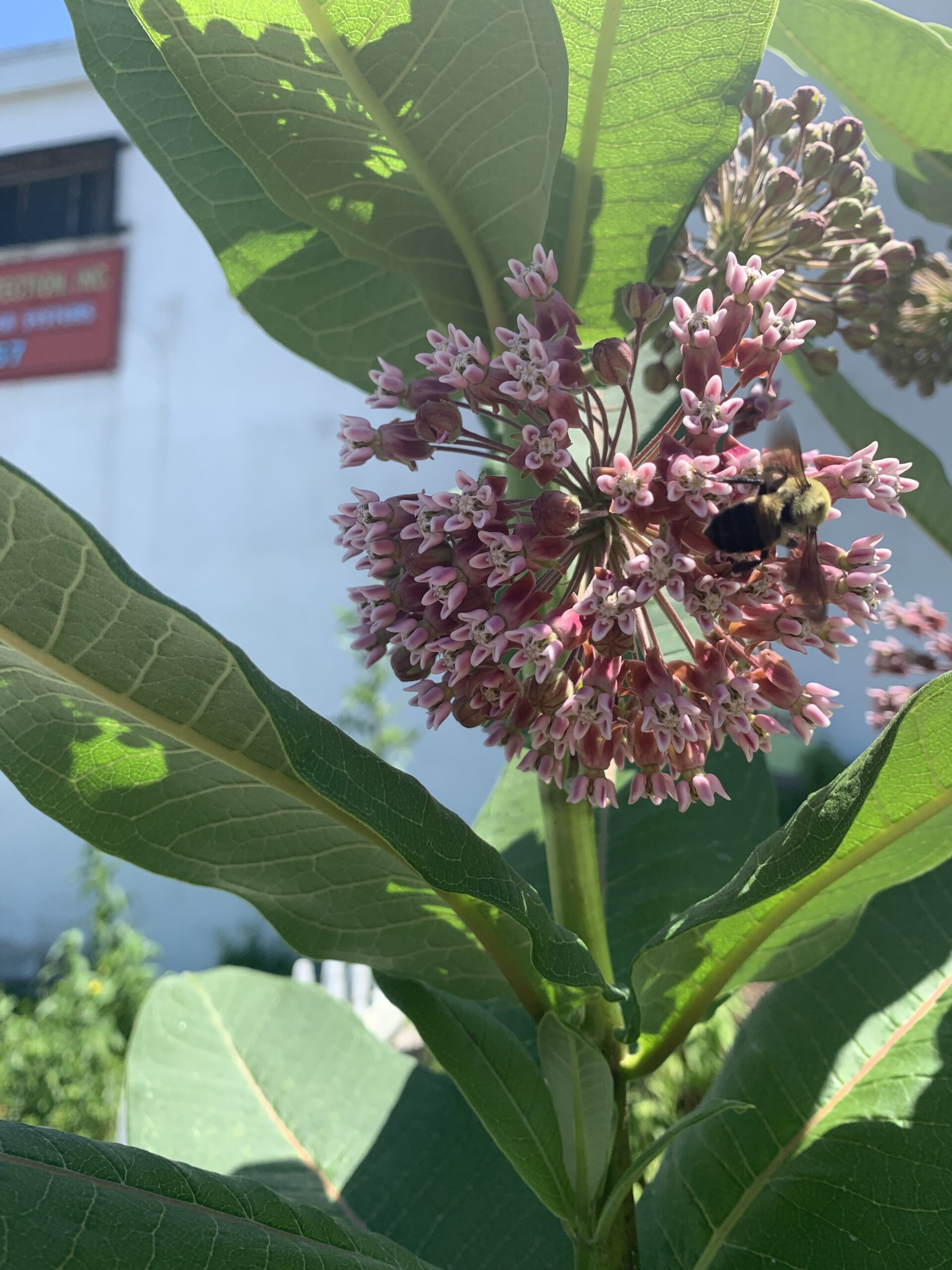Fall planting & native flowers
This post is interactive! Pick up milkweed & wild bergamot seed packets at Little Free Libraries in front of our 10th & Pine Street and Juliana Street community gardens.
If you think you’re done planting as frost hits, think again. Many seeds require stratification, a cold and damp period in winter (or simulated at home in a fridge/cool place) to break their dormancy and sprout come spring. If you’ve ever planted tulip bulbs, you’re familiar with planting in the fall for our area. Same idea for the milkweed and wild bergamot you’ve picked up.
Milkweed and wild bergamot are both native plants providing food and shelter to wildlife specific to our area. Plants adapted to our climate and soil will thrive naturally, without added fertilizers and accommodations that can be costly and environmentally harmful. Because you’ve picked up our seed packets, we know these are important to you as well… even after the growing season “ends.”
And if you’re looking for other ways to garden as the season winds down, check out more ideas here.
How to plant…
Milkweed
With clusters of whiteish purple blooms on tall stalks, milkweed is a native plant crucial to monarch butterflies. In fact, milkweed is the only food source of monarch caterpillars; the plant later provides nectar and a space to lay eggs for the butterflies. In fall as the seed pods break open, the fluffy down carries its seeds naturally in the wind. But for your home planting, see below:
Plant seeds 1/4″ deep in damp soil in fall or early winter.
Milkweed prefers full (or nearly full) sun, and are most successful with about a foot between each plant. Soil of medium fertility is preferable and weeding well in the first year is beneficial. Milkweed thrives even in our most urban garden settings. Milkweed requires cold stratification – if you forget to plant your seeds this fall, you can place them in the refrigerator for one to two months before planting in the spring.
Wild Bergamot
Bergamot is a beloved wildflower of hummingbirds and other pollinators. Its light lavender blooms, as well as its leaves, are edible: it can be used medicinally for upper respiratory issues or as a flavoring for teas, salads, and more. Wild bergamot is a perennial in the mint family – and is well known to spread underground so plants can be divided, however it can also be propagated with cuttings. You may also know bergamot as ‘monarda’, and it is related to beebalm.
Sow seeds outside before fall frost, about 1/4″ deep. Plants prefer full sun and moist soil, and around 1 foot between each plant. Wild bergamot/beebalm will grow to 4 feet in height, and may not produce flowers until their second year.




